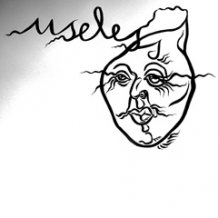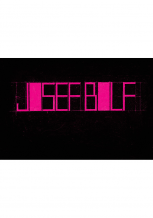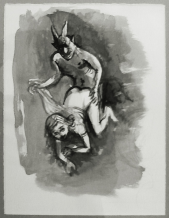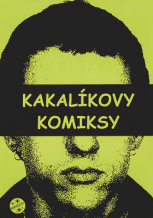| Umělec magazine 2009/2 >> Austria: Nation of Culture Without Cultural Policy? | List of all editions. | ||||||||||||
|
|||||||||||||
Austria: Nation of Culture Without Cultural Policy?Umělec magazine 2009/201.02.2009 Monika Mokre | cultural policy | en cs de |
|||||||||||||
|
Ask anyone—tourists, locals, immigrants—and they will all argue that Austria is a nation of culture. People will mention the Staatsoper, the Burgtheater, the Kunsthistorische Museum and the Salzburger Festspiele as proof of the country’s great cultural endeavors.
But don’t ask questions about cultural policy to contemporary artists and those actually involved in any authentic cultural initiatives. Their answer would most likely be more hesitant, and they would point out the lack of cultural interest on the part of political institutions and society at large, as well as the country’s declining financial support for culture and the arts. However, if you ask any politician you will hear how culture is fundamental for Austria; the nation’s cultural achievements are unique and public authorities are committed to art and culture. If you then dare to ask more specific questions about the country’s cultural political goals and achievements, the answer will probably include impressive internationally comparable grants spent on art and culture alongside political goals of preserving the country’s cultural heritage via festivals which attract large audiences and creative industries. But this set of goals may seem haphazard to someone that is not fully aware of the historical developments and diversification of Austrian cultural policy. The Roots of Austrian Cultural Policy The roots of the Austrian 20th century cultural policy can be traced back three centuries; not to fear, however, despite this impressive amount of time, the history is rather accessible. The country’s policies have hardly undergone any drastic changes, partly because the Austrian government has remained consistent in its philosophy that the arts ought to be supported through public funds—the arts are, in their eyes, society’s responsibility to maintain. The wealth of the Habsburgs not only made generous spending on art possible and led to a blossoming of the Austrian artistic culture, but it also caused the arts to be dependent on state support. This basic pattern of high financial contributions to art and its strong reliance on governmental policy outlived the fall of the Habsburg Monarchy with this centralized structure of financial support. Austrian cultural policy was heavily shaped due to the tradition of the monarchy until the end of the 20th century. Since then a lion’s share of this political money has been invested in cultural heritage (historical buildings, museums, operas and major institutions. Culture for Everybody With the ebb and flow of political movements and national sentiments, the framework of this cultural policy has shifted its focus quite often. The changes in society resulting from the 1968 social turmoil and the influence of the Social Democratic party, which held power with an absolute majority at the beginning of the 1970s, are important to mention here. At this point, for the first time ever after the Second World War, contemporary art forms and culture initiatives with wide social objectives attracted attention of Austrian cultural policy and were considered in its subsidy programs. Though the subsidies remained negligibly small compared to the sums for the cultural heritage, they proved to be enough to boost certain dynamics in this sector. Support of contemporary art and cultural initiatives is partly seen with political objectives in mind—but is more accurately defined as a need to break up conservative cultural hegemony. The Social Democratic policy in this area, however, has remained poor-spirited and lacking a concise program. Part of the welfare orientation presented cultural policy with the slogan “Culture for Everybody.” It mainly aimed at making high culture accessible to the masses, including the educationally disadvantaged layers of society. The idea behind this concept was to unite the traditional educational role of art and culture with egalitarian values. It only took a small nudge in the 1980s to direct cultural support into the commercial sphere. The aim originally was to teach the illiterate masses to appreciate high culture, but it later would transform to demand art and culture conform to the tastes of the public, their desired audience. Although the cultural political agenda of the Social Democrats was contradictory and hardly influential, social development and political culture in Austria was crucially influenced by a distinct redistribution policy. The country managed to build an extremely strong and successful welfare state with high social security. However relevant a concentrated social network was for the entire Austrian population, it repeatedly proved that job security in regular employment situations consistently applied to only a part of the labor force, particularly to male domestic employees in big industries. Females, immigrants and artists, who were not working in prestigious institutions of cultural heritage, lived without steady employment. Nevertheless, the political goal of social security and full employment displayed at least one discursive point that enabled a constructive critique of the existing situation. Continuous discussions concerning the highly disproportionate distribution of government financial support led to an increase in subsidies for freelance art and culture projects that previously lacked finance in comparison to subsidies aimed at big institutions. It thus became possible for these projects and initiatives to establish themselves to some extent while also having an impact on the discourse. Culture initiatives focused themselves on socially relevant issues. In the 1970s the concept of cultural work was coined in order to address issues of mythical autonomy in art while revealing the limitations surrounding the concepts behind commissioned art. Cultural work stood for participatory, politically dedicated work in cultural sectors as well as cultural works created via artistic means; acceptance of a work by an artist’s peers was of little importance. The classical avant-garde’s attempt to annul the distinction between art and life had to be revived in specific local contexts. Contrary to art business, the main goal was not to create new works, but to enable, run, and stage cultural productions. Cultural work was no longer perceived as a creative endeavor that comes from the efforts of an individual but as a collective process, in which anyone may take part and the results of which were meant to make the activities respectively more open to the public. In the 1980s, a new phase of institutionalization began: associations were established and an infrastructure was constructed, in most cases on a voluntary and self-commissioned basis often outside centers. They were aimed at creating a cultural concept different from high and folksy culture—known as socioculture. Cultural Policy as Economic Policy During the 1990s, the last phase of the welfare state, Social Democratic orientation came to an end and a new political paradigm emerged–the history of economically exploitable art/culture. This paradigm was already proclaimed in the 1980s within discussions about the economic consequences of major cultural events. Austria also discovered a creative economy despite the first attempts to implement the concept of creative industries in Austria being helpless and confused. As in 2000, when Austria’s new secretary of state, Franz Morak, spoke about the creative industry, he was obviously unaware about the subject, but he was hoping that the Austrian creative industry would pop up simply from being mentioned. Political activities meant to encourage creative industries in Austria were, and still remain, ineffective. An association of creative industries was established in the centrally located Museums Quarter. The Viennese Museum Quarter was opened in 2001 after decades of discussions and represents a conglomerate of several museums. It was founded for two reasons: First, there were centrally located historical buildings which needed to be exploited and second, space was required for several major museums. Since the settlement of multiple museums in a single historical complex did not seem modern or attractive enough, a better moniker was vital in order to sell the Museums Quarter as a lively and attractive cultural area from the 21st century. This moniker would be Quarter 21 which provides venues for contemporary artistic and cultural productions, especially for creative industries. This way, it is possible for Museum Quarter to claim not only that it is devoted to the representation of art but also to its production; that it is not exclusively a place of cultural heritage, but also a contemporary artistic worksite itself. Specific execution of this idea shows both the unbroken pattern of the paternalistic top-down approach of Austrian cultural policy and the difficulties in establishing an adequate way to deal with the structures of creative industries. The publicly funded maintenance company of Museums Quarter is eager to make a profit and therefore demands rents from the space’s venues. Despite the fact that these rents are state-aided, due to the high real estate value of the surrounding area in Vienna, they still exceed the financial capabilities of many small high-risk start-ups. Financial support of creative industries is similarly difficult. Instead of encouraging the structures that could enable long-term development, individual projects are supported, which usually results in project organizers being left with no financial means for further activities after a project’s completion. In addition, the formalities for a project submission are so bureaucratic that they place too much of a strain on smaller firms, especially on one-person companies, which constitute a big part of the creative industry. Time for an Austrian Cultural Policy What are the overall results of this tour de force through Austrian cultural policy? The cultural heritage is taken good care of. Moreover, the times of plenty—if there ever were any, and of the Social Democratic cultural policy—are over. And finally, cultural initiatives and political art now must bear the brunt of it; they fight for their survival after their short and restricted economic recovery in the 1970s and 1980s. Cultural policy is now viewed as an appendix to economic policy. Undoubtedly, Austria will be able to continue its existence as a nation of culture; the cultural heritage remains. Future generations will certainly marvel solely at the cultural heritage of their grandfathers and great-grandfathers as their parents are unlikely to leave them such a legacy. However, as it stands now, potential cultural productivity of contemporary artists and those involved in cultural work will be lost. If after the elections in September, the newly elected government could become a fairy, and allow three wishes to art and culture: these would be for a verifiable cultural policy that is both well-articulated and comprehensible, a cultural policy that is aware of the independent social contributions of art and culture, and a cultural policy that views contemporary artistic and cultural work as its top priority. If only these wishes could be granted by an Austrian art/culture minister—and not a mythological creature.
01.02.2009
Recommended articles
|
|||||||||||||
|
04.02.2020 10:17
Letošní 50. ročník Art Basel přilákal celkem 93 000 návštěvníků a sběratelů z 80 zemí světa. 290 prémiových galerií představilo umělecká díla od počátku 20. století až po současnost. Hlavní sektor přehlídky, tradičně v prvním patře výstavního prostoru, představil 232 předních galerií z celého světa nabízející umění nejvyšší kvality. Veletrh ukázal vzestupný trend prodeje prostřednictvím galerií jak soukromým sbírkám, tak i institucím. Kromě hlavního veletrhu stály za návštěvu i ty přidružené: Volta, Liste a Photo Basel, k tomu doprovodné programy a výstavy v místních institucích, které kvalitou daleko přesahují hranice města tj. Kunsthalle Basel, Kunstmuseum, Tinguely muzeum nebo Fondation Beyeler.
|




































 We Are Rising National Gallery For You! Go to Kyjov by Krásná Lípa no.37.
We Are Rising National Gallery For You! Go to Kyjov by Krásná Lípa no.37.
Comments
There are currently no comments.Add new comment